 |
||||||||||||||
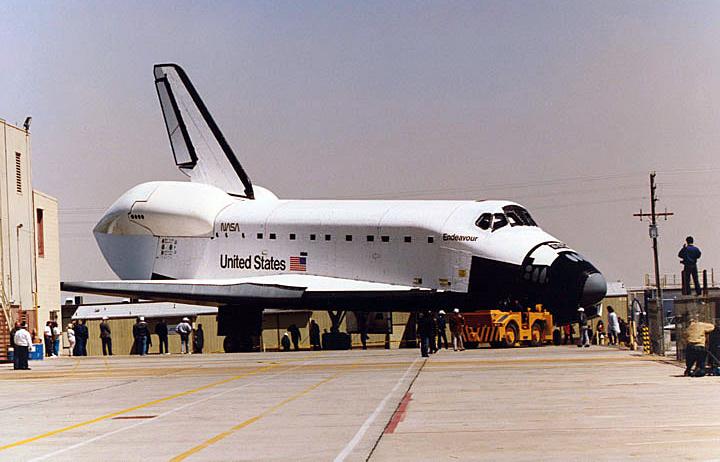 |
||||
Orbiter Statistics: Endeavour (OV-105) Rollout: 25 Apr. 1991 First Flight: 7 May 1992 (STS-49) Final Flight: 16 May 2011 (STS-134) Named for James Cook’s first ship to explore the South Pacific, HMS Endeavour, 1768-1769. This was the first research expedition to focus primarily on scientific exploration instead of just pure discovery. The primary task on this voyage was to take scientists into the southern hemisphere to study the transit of Venus across the face of the Sun. OV-105 was built using the structural spares manufactured in case of major damage to another orbiter. |
||||
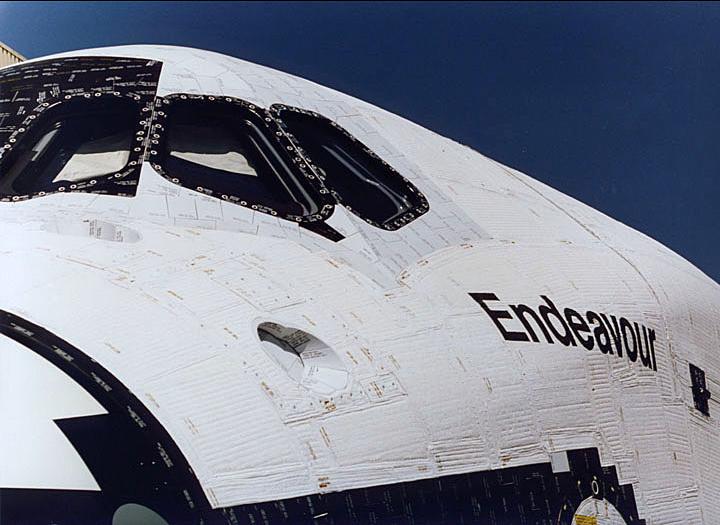 |
||||||
The newest Space Shuttle orbiter was the Endeavour. It was built as a replacement for the Challenger. The name was chosen through a contest with school children. Rollout occurred on 25 Apr. 1991 at the Palmdale plant of North American Rockwell. |
||||||
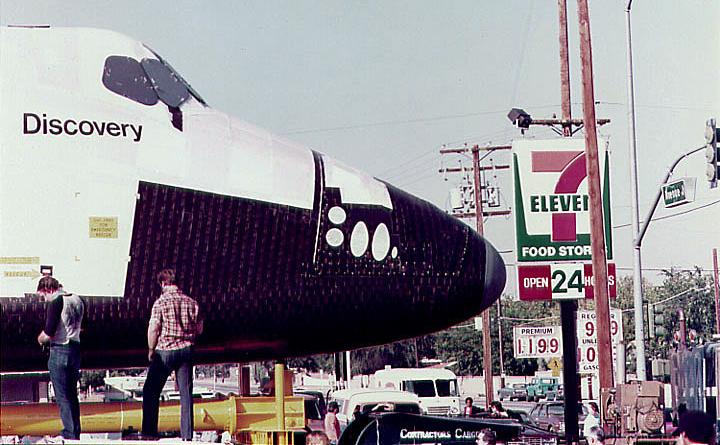 |
|||||||
Orbiter Statistics: Discovery (OV-103) Rollout: 16 Oct., 1983 First Flight: 30 Aug. 1984 (STS-41D) Final Flight: 24 Feb. 2011 (STS-133) Named for Henry Hudson’s ship, Discovery, used in 1610-1611 in the search for the Northwest Passage and the discovery of Hudson Bay. Also named for James Cook’s ship, the HMS Discovery, that discovered Hawaii in 1778 and for Robert Falcon Scott’s ship, the RRS Discovery, used on his first expedition to Antarctica, 1902-1904. |
|||||||
When Discovery was rolled out in October 1983, the orbiter had to be trucked overland approximately 30 miles from Palmdale to Edwards AFB. Once there, the shuttle was loaded on the 747 and ferried back to the Kennedy Space Center for flight. This overland journey provided interesting opportunities for photography, as shown in the two photos at left. |
|||||||
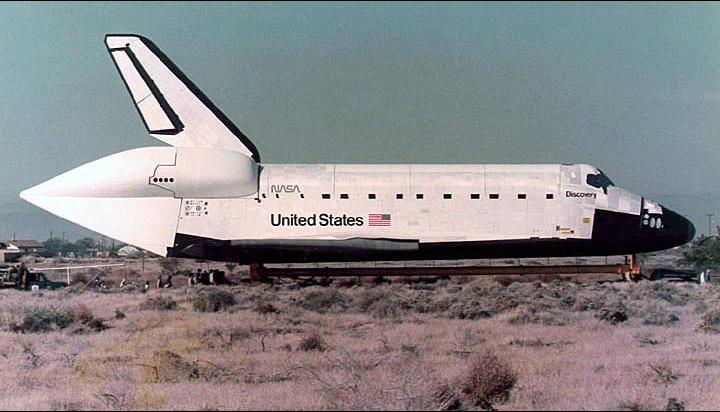 |
|||||||
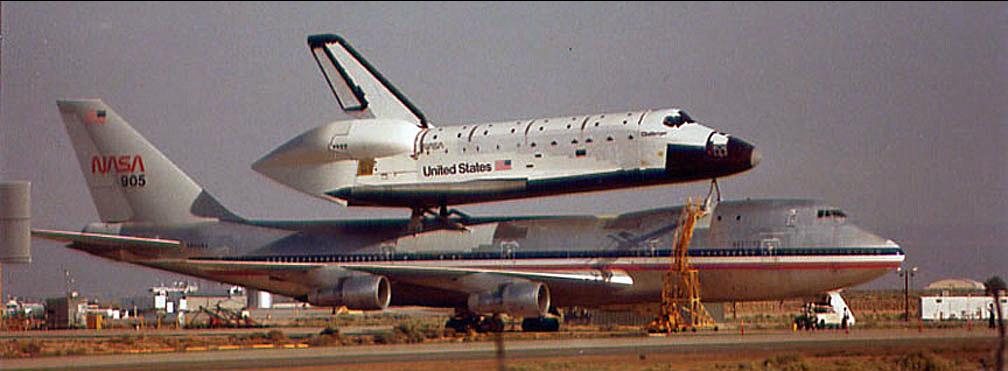 |
||
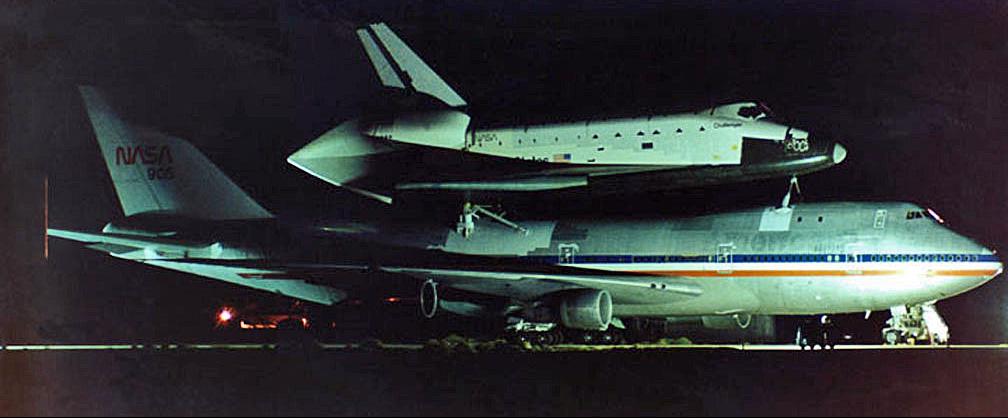 |
||
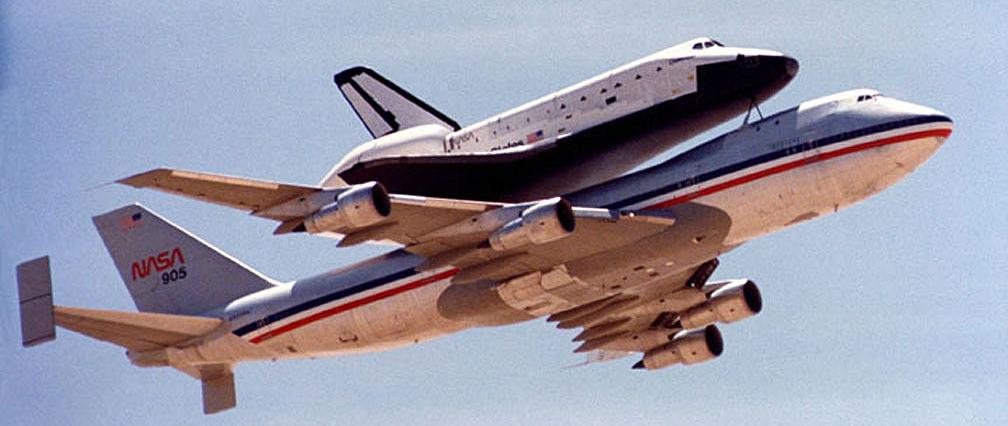 |
||
Orbiter Statistics: Challenger (OV-099) Rollout: 30 Jun. 1982 First Flight: 4 Apr. 1983 (STS-6) Final Flight: 28 Jan. 1986 (STS-51L) Named for British scientific exploration ship HMS Challenger, 1872-1876. Sailed nearly 70,000 miles during a four year expedition to study the flora and fauna of the world. This was the first steam-powered ship to cross the Antarctic Circle. OV-099 was originally scheduled as the Structural Test Article but was refurbished and reconfigured as an orbital vehicle when it was found that upgrading Enterprise for space would cost too much and would involve too many weight and systems penalties. |
||||
The three photos above show the Challenger after its arrival at Edwards AFB and mating to the 747 SCA. The shot at top is taken just prior to sunset on 3 Jul. 1983. In the middle is after dark with the lights turned on. Bottom shows the Challenger on the back of the 747 SCA as it took off to head to Kennedy Space Center for the first time on 4 Jul. 1983. The flight took place just a few hours after the landing of Columbia on STS-4. President Ronald Reagan and approximately one million spectators were present in and around the base for this event. |
||||
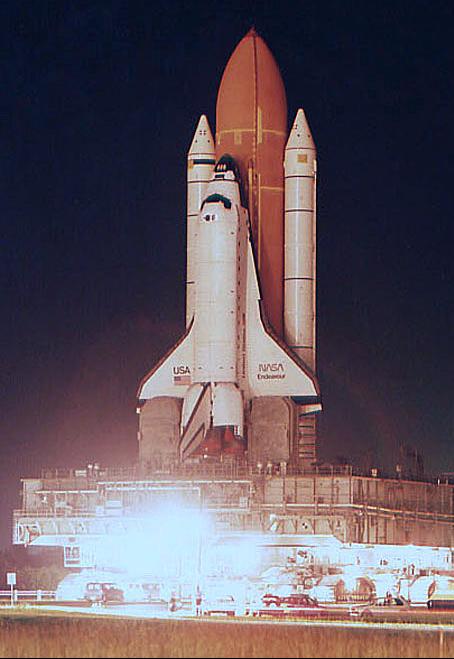 |
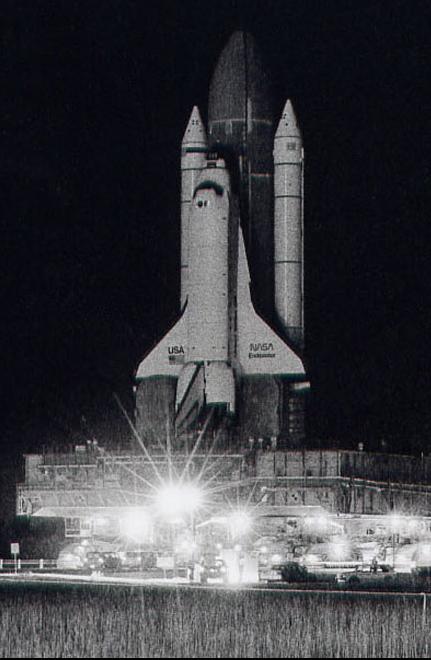 |
|||||
While at the Kennedy Space Center awaiting launch of mission STS-71 in June 1995, the Endeavour was rolled out to Pad 39-A in preparation for a future mission (STS-69). The rollout took place after midnight and was completed around dawn.
The photos here were taken during the rollout with very little light, requiring fast film and long time exposures. Also shown is Endeavour hard down on the pad just after sunrise. This mission is notable because it is the one where the shuttle stack had to be rolled back to the Vehicle Assembly Building (VAB) to repair the insulation on the External Tank after woodpeckers had punctured it with holes. This rollout occurred after the tank was repaired.
For more extensive coverage of a Space Shuttle rollout, check out the story and photographs for the rollout of STS-121 on 19 May 2006. |
||||||
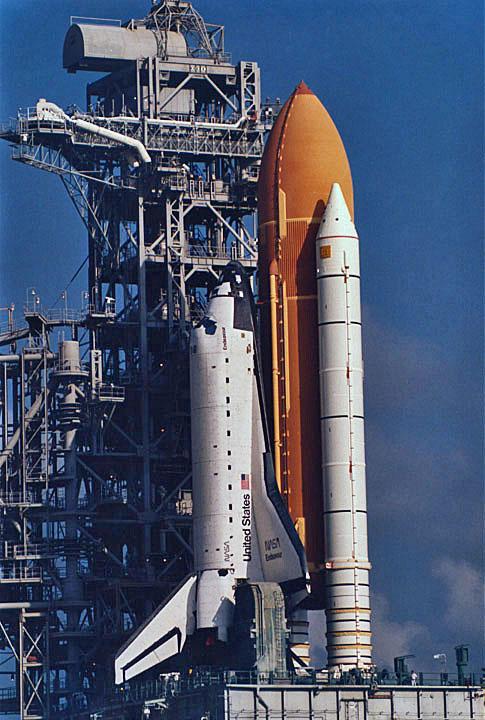 |
||||
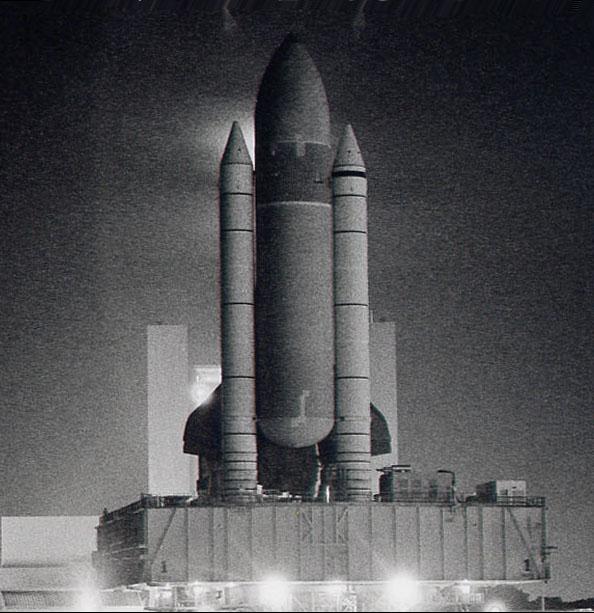 |
||||